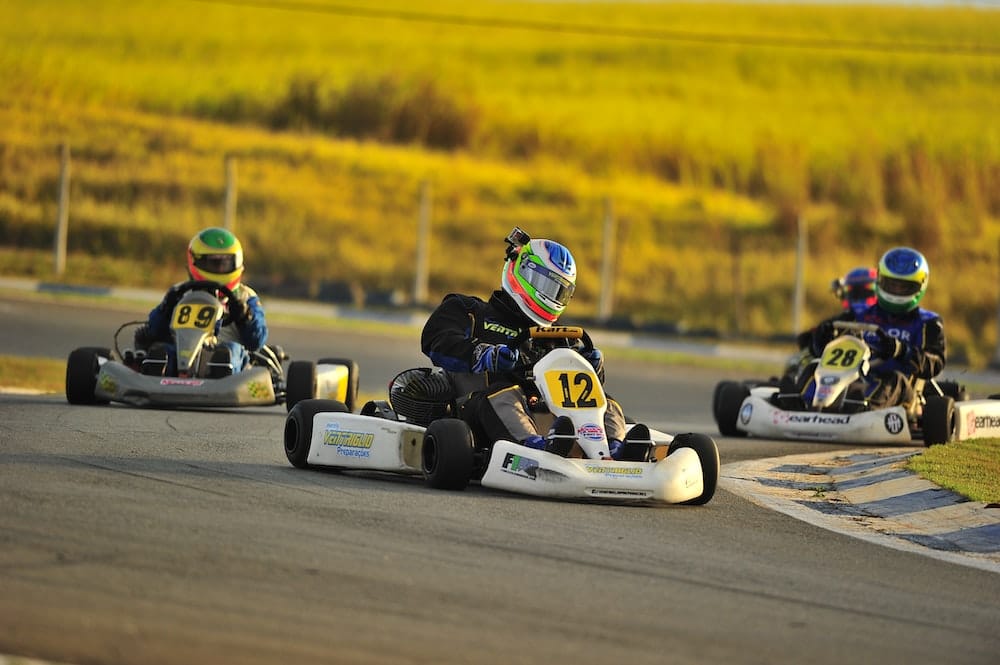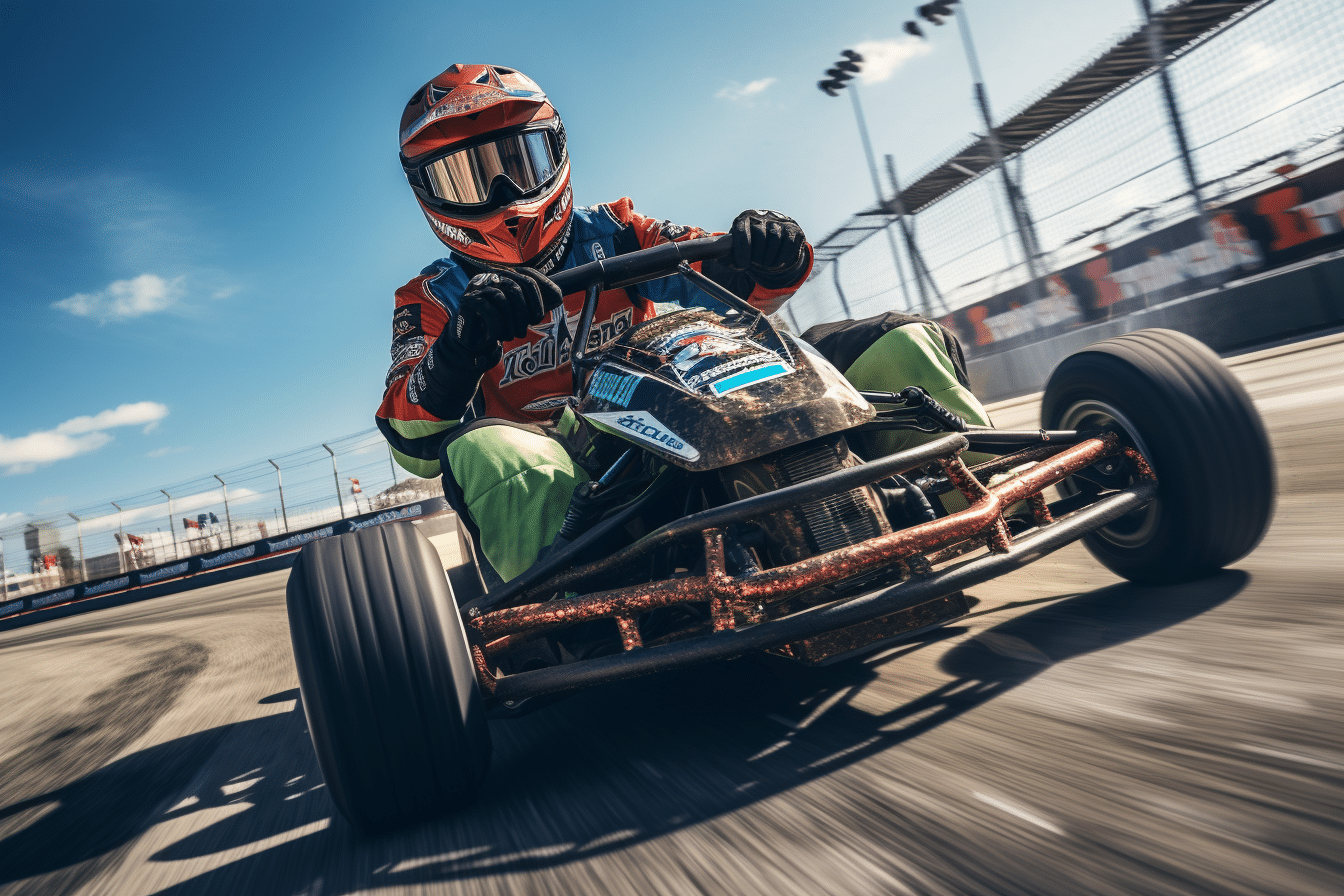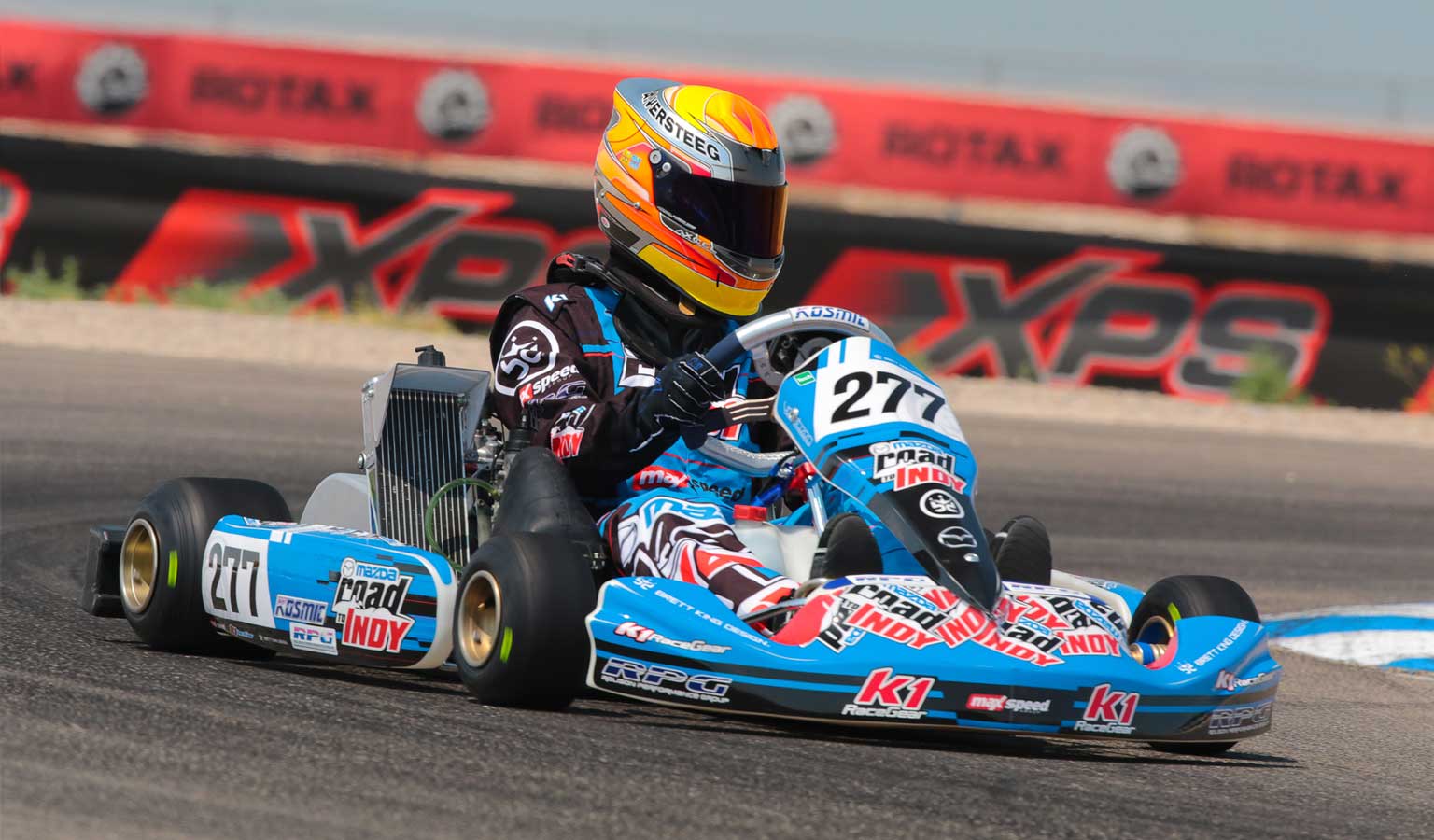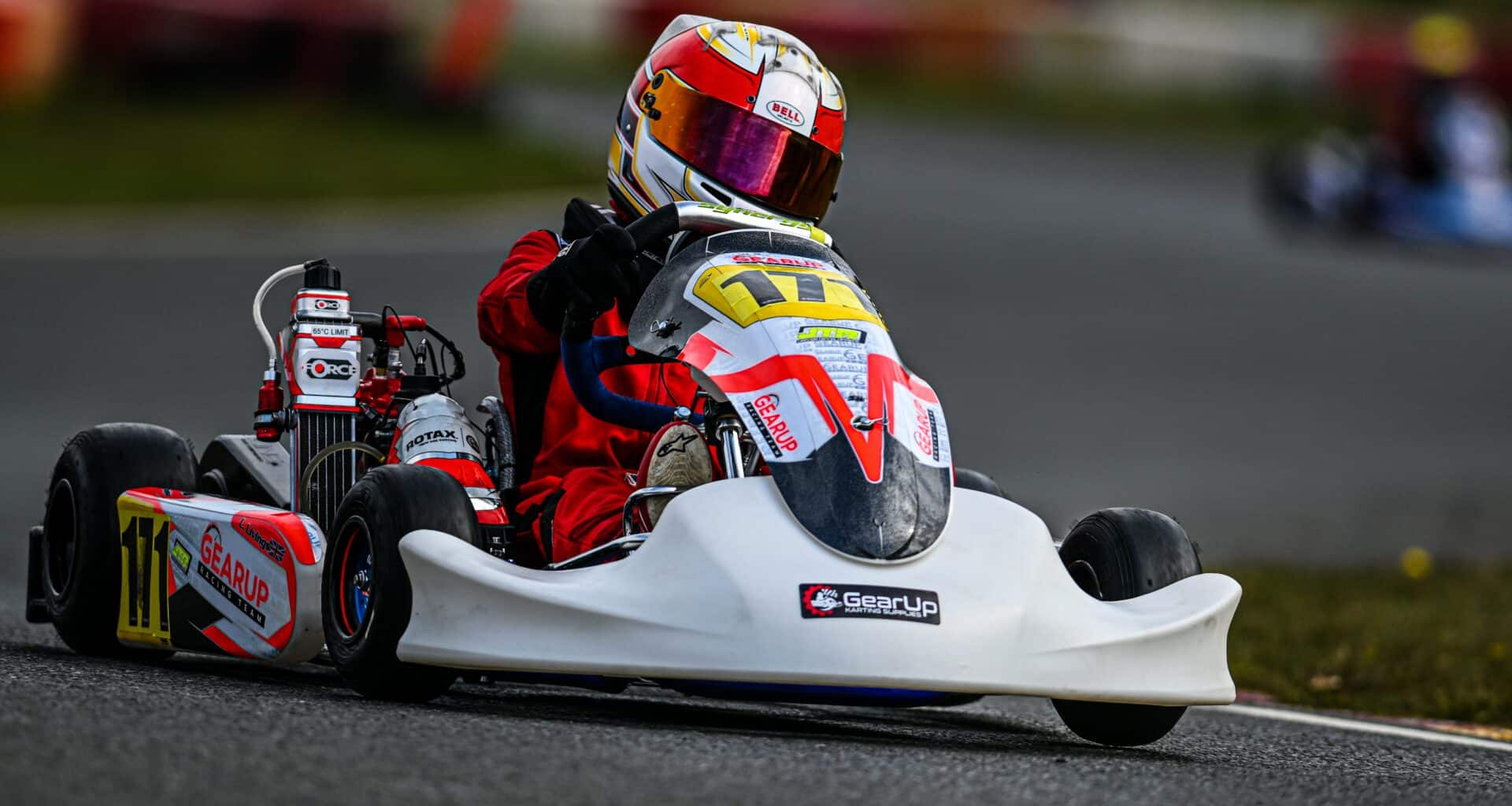Table of Contents
- 0.1 The Critical Role of Tires in Go-Kart Performance
- 0.2 The Importance of Correct Tire Choice for the Conditions
- 1 Various Types of Go-Kart Tires
- 2 The Mechanics and Physics of Go-Kart Tires
- 3 How to Select the Proper Tire Size and Compound
- 4 Cost and Budget Considerations for Go-Kart Tires
- 5 Overview of Major Go-Kart Tire Manufacturers
- 6 Proper Care and Maintenance of Go-Kart Tires
- 7 Frequently Asked Questions
- 8 Conclusion
The Critical Role of Tires in Go-Kart Performance
Go-kart tires play an extremely important role in the overall performance and handling of the kart. As the only component making contact with the ground, the tires provide all of the grip and traction needed for acceleration, braking, and cornering. The type of tire, the tread compound, inflation pressure, and proper maintenance directly impact speed, lap times, and control.
During acceleration, the rear tires must grip the track surface in order to transfer engine power to the ground and propel the kart forward. while braking, the front tires especially carry the load of slowing and stopping the vehicle. In the corners, the tires must resist sliding laterally and dig into the track to achieve optimal turning. Clearly, tire choice and condition is absolutely critical for maximizing go-kart performance.
The Importance of Correct Tire Choice for the Conditions
Selecting the ideal tire for the specific track surface and weather conditions is essential in go-kart racing. The wrong tire choice can easily mean the difference between winning and losing a race. An incorrect compound or tread pattern can lead to slipping, sliding, loss of control, and dramatically slower lap times.
For example, using a hard slick tire on a damp track will likely lead to wheel spin coming out of corners and potential spin-outs. Conversely, soft wet weather tires on a dry track may overheat quickly leading to degradation and lack of grip. Tire choice must match the demands of the situation.
It is absolutely critical that go-kart racers understand the differences between tire types and compounds and make informed selections appropriate for each race. The tires connect the kart to the ground, so putting in research and testing to optimize them for the conditions is one of the best ways to maximize performance on race day.
Various Types of Go-Kart Tires
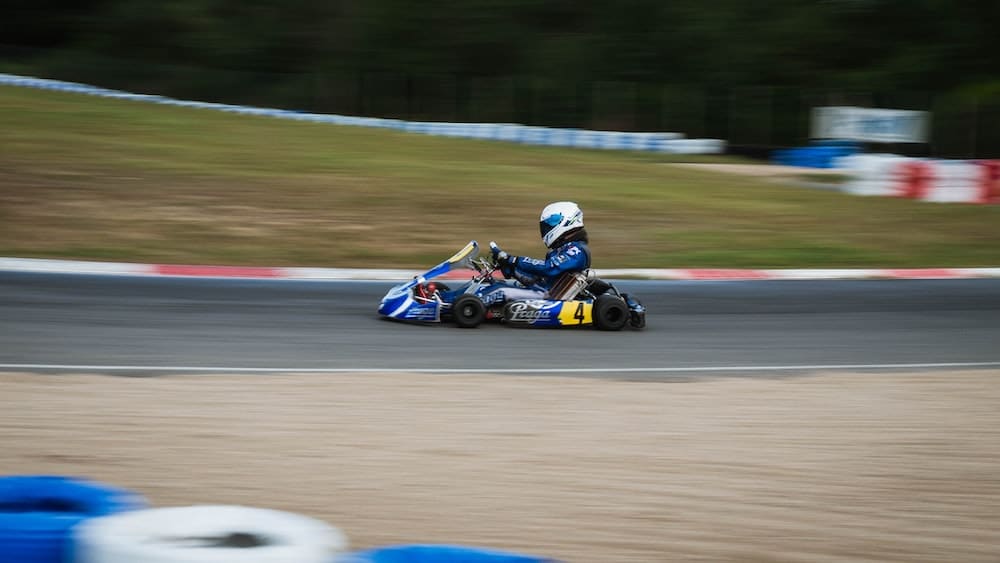
Key Differences Between Slick and Wet Tires
Slick tires have no tread pattern and are designed to provide maximum grip and contact with hard, dry surfaces like asphalt or concrete. The large, flat contact patch enables very high cornering forces before slippage occurs. However, slick tires provide poor wet weather performance due to hydroplaning on standing water.
Wet tires are designed with grooves and cuts in the tread pattern specifically to displace water from the contact patch and provide channels for water to escape beneath the tire. This prevents hydroplaning and allows for reasonable grip even in wet conditions. The tradeoff is decreased dry performance from the smaller actual tire contact on the track surface.
Specialty Tires for Different Track Surfaces and Conditions
Beyond basic slicks and wets, go-kart tires are also available in specialty tread patterns and compounds for specific situations:
- Dirt tires use tall, widely spaced knobs to eject mud and debris from the tread.
- Street tires offer increased durability for concession/rental karts.
- Indoor track tires provide grip on smooth surfaces.
- Hard compound tires resist wear but give up wet/cold grip.
- Soft compound tires provide maximum warm grip but wear quicker.
It is essential to understand these differences and choose the proper tire for the race conditions to maximize traction and control.
The Mechanics and Physics of Go-Kart Tires

Anatomy and Components of a Go-Kart Tire
Go-kart tires are precision engineered and constructed with several important components:
- Tread – The rubber that contacts the track surface.
- Sidewalls – Flank the tread and affect handling.
- Beads – Seal the tire to the wheel rim.
- Belts – Stabilize the tread and provide support.
- Inner liner – Retains inflation air pressure.
The materials used and the design of each component determine the overall performance characteristics of the tire. Every element serves a specific purpose in traction, grip, durability, and handling.
The Effects of Tire Pressure on Performance
Inflation pressure affects a tire’s grip, handling, wear life, and rolling resistance. Higher pressures reduce the size of the contact patch which decreases friction potential. Excessively low pressures cause too much tire deformation, compromising performance.
Maintaining the ideal inflation pressure for a given tire ensures proper tire shape and contact patch area for maximum grip. Racers should use high quality, calibrated pressure gauges and fine tune pressures through extensive testing to optimize tire performance.
How to Select the Proper Tire Size and Compound
The Importance of Optimizing Tire Sizes
Go-kart tire sizes include tread width, sidewall height, and rim diameter. Selecting the proper dimensions for a given kart and track setup improves acceleration, braking, cornering, and overall lap times.
Wider tires provide larger contact patches and more grip, while narrower tires reduce drag. Lower sidewalls allow better feel but decrease cushioning. Matching rim size properly ensures a secure fit. Racers must understand how size dimensions affect performance.
Understanding Tire Compound Options and Tradeoffs

Tire compounds refer to the rubber formulation used in molding the tread. Softer compounds provide more grip, but at the cost of faster wear. Hard compounds are more durable but give up cold temperature grip and traction.
Finding the ideal balance is key. A grippy but short-lived soft compound may lower lap times initially but degrade rapidly. A resilient hard compound may last longer, but sacrifice cornering and acceleration traction when pushed hard.
Testing different compounds dialed to a kart’s needs can maximize both grip and longevity. Heat cycling also impacts rubber properties, so an optimal mid-range compound may offer the ideal solution.
Cost and Budget Considerations for Go-Kart Tires
Factors that Determine the Price of Tires
Several variables influence the pricing of go-kart tires including:
- Brand reputation and technology
- Quality of materials and construction
- Specialty compounds and tread designs
- Size, width, and sidewall choices
- Durability and wear life
Premium and high-performance tires demand higher costs due to extensive R&D and complex production techniques. Larger, wider tires also cost more based on increased materials.
Balancing Tire Budget Against Performance Needs
For many club racers, mid-range tires represent the ideal balance of affordability and performance. Lower cost budget tires may sacrifice consistency and longevity, while top-tier tires provide increasingly smaller gains at higher prices.
Understanding this value curve allows racers to maximize lap times without overspending. With smart tire choices, impressive grip and cornering can be achieved even on a limited budget.
Overview of Major Go-Kart Tire Manufacturers
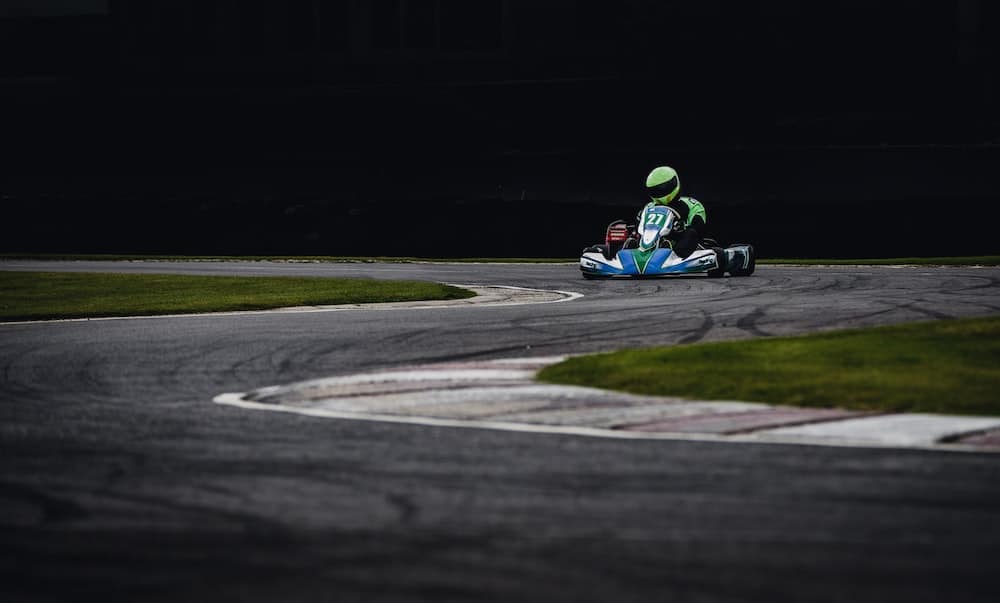
Leading Brands and Key Features
Many top manufacturers specialize in engineering tires specifically for kart racing. Popular brands include:
- Bridgestone – Potenza line, wide range.
- Dunlop – Kartsport series, value focus.
- Hoosier – Diverse racing compounds.
- Vega – Leading CIK-FIA tires.
- Burris – Innovative materials.
- MG – Red/Yellow budget tires.
Each company offers an array of tread patterns, sizes, and rubber compounds to suit different conditions, budgets, and needs.
Newer and Niche Tire Brand Characteristics
Emerging brands must still build their reputation, so they often aim for affordable price points to attract buyers. However, some focus on specialized tires using unique materials or custom engineering for high-end racing applications.
While major players still dominate, these innovative upstarts are making inroads with specific racing segments and tire technologies.
Proper Care and Maintenance of Go-Kart Tires
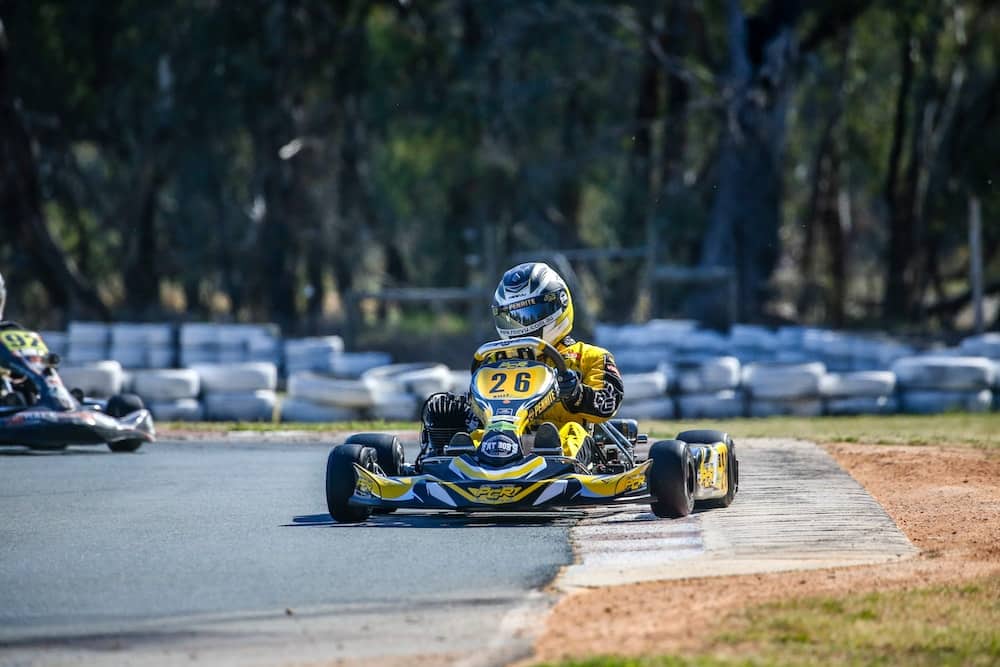
Basic Maintenance Tips for Maximizing Tire Performance
Proper tire care and maintenance improves grip, handling, and longevity. Recommended practices include:
- Use calibrated gauges to set accurate pressures.
- Inspect for cuts, bubbles, cracks, or cord damage.
- Avoid exposure to oils, grease, and chemicals.
- Clean tires before storage to remove dirt and debris.
- Limit direct UV exposure and extreme temperatures when possible.
Recognizing When It Is Time to Replace Tires
Indicators that tires should be replaced include:
- Uneven or rapid tread wear.
- Reduced grip during acceleration, braking, or cornering.
- Vibrations felt through the steering wheel or chassis.
- Changes in overall kart handling and feel.
- Exceeding maximum recommended heat cycles.
Catching issues early helps avoid degraded performance or dangerous on-track failures.
Frequently Asked Questions
How to Select the Best Tires Based on Track and Conditions
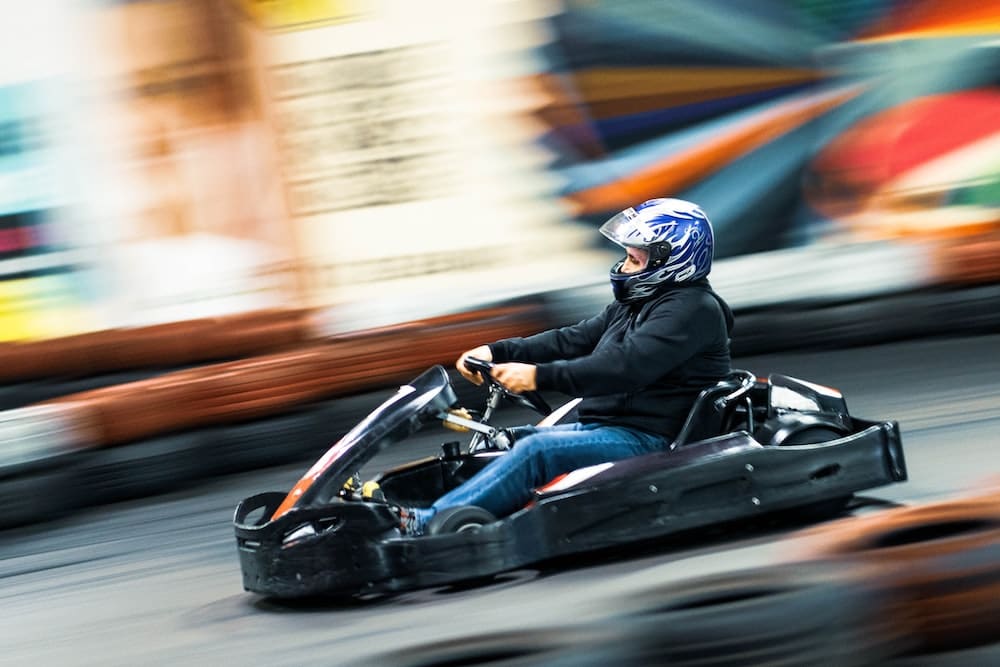
Most manufacturers provide detailed tire selection guides recommending compounds, sizes, and tread types optimized for different track configurations and weather conditions. Consulting local experts for advice can also be extremely helpful.
In general:
- Hard, slick tires work best on high grip concrete or asphalt tracks.
- Softer slicks generate more grip on abrasive or low traction surfaces.
- Grooved wet weather tires are mandatory for damp tracks.
- Street tread tires offer versatility for changing conditions.
Tips for Maximizing Go-Kart Tire Life and Performance
Recommendations for optimizing tire longevity and grip include:
- Inflate tires based on testing, not estimates or guesses.
- Rotate front to rear to distribute wear patterns.
- Avoid burnouts, drifts, and curbing which can damage tires.
- Select compounds wisely for ambient conditions.
- Store tires properly when not in use.
Conclusion
The Value of Tire Knowledge in Making Informed Choices
Understanding the different types of go-kart tires, compounds, sizes, and maintenance best practices enables drivers to make educated selections best suited for their specific karts, driving style, and racing conditions.
The Significant Impact of Tire Selection on Driving Experience
The right tires provide thrilling grip, responsive handling, and fast lap times. The wrong tires lead to understeer, oversteer, lack of traction, and disappointing results. Proper tire choice is a crucial factor in go-kart performance and enjoyment.
